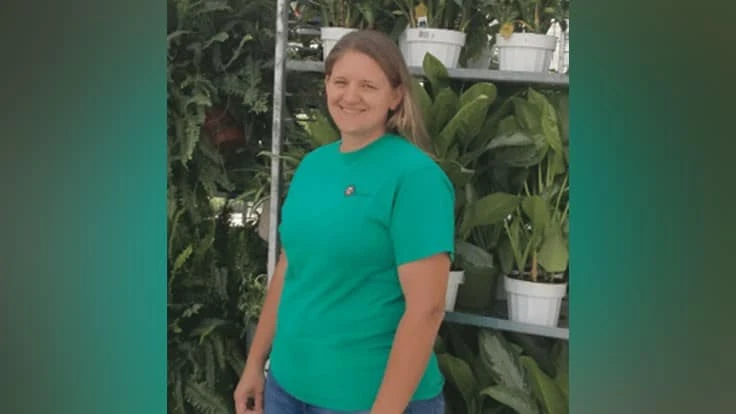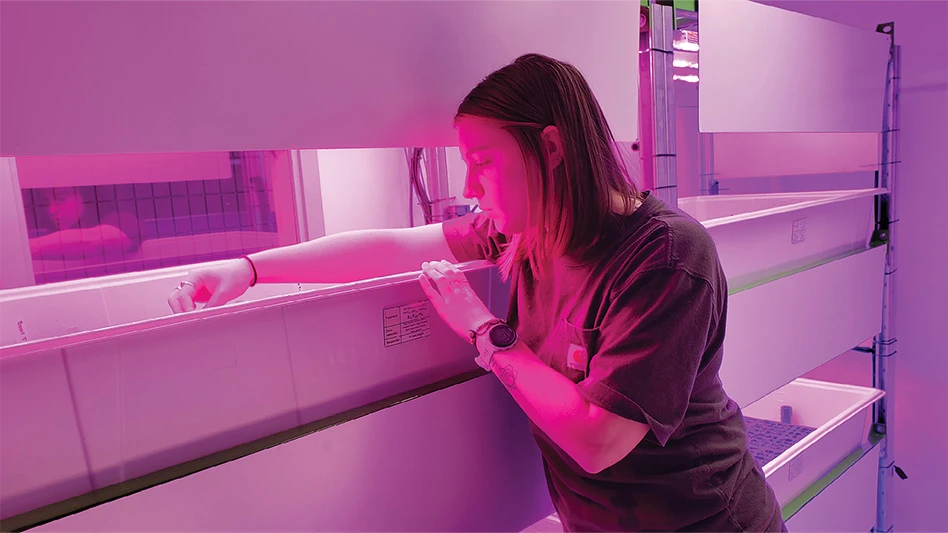

Growing up, Lacey Strupp often visited Moss Greenhouses in Jerome, Idaho, to have lunch with her grandmother, who worked there as a seasonal irrigator for 14 years. Strupp didn’t know then that she’d end up working there, too.
One of 11 children raised on a 185-acre alfalfa farm about 14 miles from the greenhouse, Strupp developed a strong work ethic and passion for the outdoors at a young age. “I’d rather be weeding and working in the garden than in the house,” she says. “I wanted to be outside playing in the dirt.”
Strupp explored various careers at the local community college before earning her associates degree, and later her Bachelor of Science in greenhouse management, from Brigham Young University Idaho. After interning at Moss, Strupp joined the staff full-time after graduation in 2004.
Since then, she’s taken on more responsibilities to lead the greenhouse toward higher standards of quality crop production.

Jumping into new responsibilities
Initially, Strupp oversaw half of the greenhouse as one of two section growers. But then the company eliminated the production manager position, and the other section grower left. As a result, the promotion to head grower “kind of fell in my lap,” Strupp says. “So, I jumped in and took charge.”
Now, Strupp collaborates with Moss’s head of production, co-managing the main facility in Jerome, which comprises 6.44 acres under cover and 1.85 acres of outdoor production, as well as a second location about 40 miles away with more than 2 acres of hoophouses.
A weekly production management meeting brings the team together to discuss problems, plans and progress toward sales deadlines for Moss’s wholesale customers, which include IGCs as well as grocery, farm and hardware stores.
“We’re looking at what the crops need and the timing of when we need to sell them,” says Strupp, who filters those priorities into weekly spacing, trimming and transplanting tasks for her team. “I’m talking to my growers on a daily basis — whether it’s emails, texts, phone calls or face-to-face — asking where they need help to get plants ready to sell.”

Overcoming communication obstacles
With 25 employees year-round and more than 120 at peak, communication remains an ongoing challenge because of the operation’s layout and staff demographics.
The sales team, located in offices on one end of the farm, determines production on the other side of the facility. Over time, this separation has caused a noticeable divide between the teams, sometimes resulting disagreements.
To address this gap, Moss instituted weekly mid-management meetings last fall, focused on communication training. These half-hour sessions helped managers define their individual learning and teaching styles, while providing strategies to communicate effectively with other personalities. “To make our jobs easier, we have to work together,” Strupp says. “Bringing us all to the table so we feel comfortable talking to each other really helps [improve communication].”
Language barriers tend to make training and communication even more difficult at Moss, with nearly 90% of Strupp’s growing staff speaking Spanish. “I only know five words in Spanish, so I rely on staff that are fluent to help translate,” says Strupp, who uses Google Translate to attempt conversation when bilingual teammates aren’t available.Strupp also relies on other employees when it comes to training growers. After introducing new hires to Moss’s watering equipment by showing them instructional videos on YouTube, she pairs them with experienced growers to learn how to identify and diagnose certain crop issues.
“We have growers who have been here for 25-plus years, so I send new people to them so they can learn how to tell when the plants need water, when they’re stressed or why they’re turning yellow,” she says. “Your crops really can tell you a lot, whether they’re hungry, overwatered or suffering from a virus or insect issue.”
Improving over time
By blending 16 years of experience with a deep-seated knowledge of her teammates and what makes them tick, Strupp continues to improve the operation’s growing practices.
“We’ve got to push a lot of product through in a short time,” says Director of Sales and Marketing, and future fourth-generation co-owner Jennifer Moss. “Lacey has to grow as effectively and efficiently as possible so we can meet our sales while keeping top quality.”
For example, Moss faced severe viruses and crop failures several years ago due to constant crop rotations and full greenhouses. In response, Strupp emphasized the importance of emptying and thoroughly sterilizing each greenhouse to mitigate disease. “As long as we do that on a regular basis, we don’t have problems,” she says.
Similarly, instead of keeping greenhouses at a constant 75° F, Strupp began growing at cooler temperatures, which helped cut gas bills while producing sturdier, more compact plants that are prepared for the elements.
Whether she’s enforcing sanitation protocols or modifying growing temperatures to hit sales deadlines, Strupp strives to consistently produce beautiful crops within tight constraints. That is precisely why she is a grower worth meeting.

Explore the October 2020 Issue
Check out more from this issue and find your next story to read.
Latest from Greenhouse Management
- CEA Alliance celebrates bipartisan introduction of Supporting Innovation in Agriculture Act
- Dümmen Orange North America celebrating 25th anniversary in 2025
- CEA HERB Part 1: Best management practices for culinary herbs
- Lawsuit challenges new H-2 visa rules
- CEA HERB Part 2: A guide to increasing the sowing density of culinary herbs
- Illinois Landscape Contractors Association changes name to Landscape Illinois
- 2025 Proven Winners Horticulture Scholarship applications now open
- ICL’s Gemini Granular herbicide now registered for use in California






